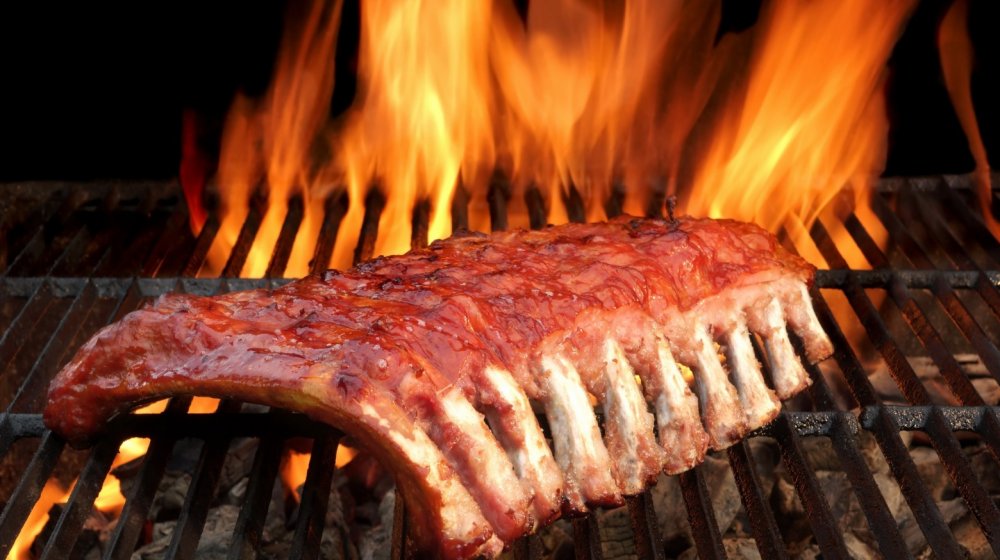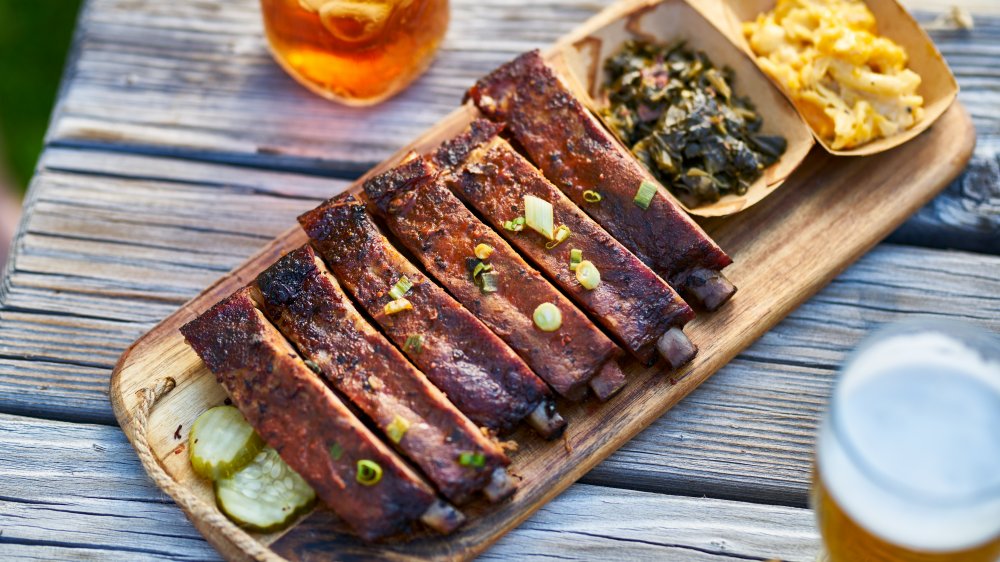The Real Difference Between Spare Ribs And Baby Back Ribs
Pork ribs are an American favorite. Whether they're marinated, flavored simply with a dry rub or finished with barbecue sauce; cooked over the grill, in a smoker, in the oven, or even your slow cooker, few can resist flavorful, succulent ribs. There are two types of commonly sold pork ribs, which can cause some confusion for rib novices: They are baby back ribs and St. Louis-style spareribs. Both deliver that crave-able rib flavor, but there are some differences you should know about before cruising the meat aisle.
Baby back Ribs, also known as pork loin back ribs, back ribs, or loin ribs (via Kitchn), despite their name, do not come from baby pigs. Rather, their name stems from the fact that they are shorter than spareribs. These ribs come from around the loin muscle found along the sides of the backbone (via Bon Appetit). A nice feature of baby back ribs is that they are less fatty than St. Louis-style ribs but still have plenty of tender, lean meat between and on top. Because a rack of baby backs is smaller than their larger St. Louis-style counterparts, they are quicker to cook. Each rack has 10 to 13 ribs, enough for about two servings.
Go big with St. Louis-style spareribs
Spareribs come from the belly, or underside, of the pig. St. Louis-style spareribs are simply spareribs from which the breastbone and cartilage have been removed, making them easier to cook and eat. They're easy to distinguish from baby backs because a rack of St. Louis-style ribs is flat and rectangular, versus the curved, more petite baby back rack. An advantage of their flatter shape is that they are easier to brown than baby backs. Spareribs are also fattier than baby backs, which is a big plus to those who love a fuller flavor. Spareribs are also less expensive than baby backs, and weighing about two-and-a-half pounds each, a slab can feed three to four people.
As for preparation and cooking, there isn't much difference between baby back ribs and the St. Louis-style ribs. Both are enhanced by marinades, rubs, and sauces. Keep in mind, however, that their larger size means that St. Louis-style ribs will take longer to cook. Baby back ribs will be done in about 1 1/2 to 2 hours at 300 degrees Fahrenheit, but St. Louis-style ribs will take 2 1/2 to 3 hours. Whatever type of ribs you choose, don't rush them. Remember that "low and slow" is the rule for tender, perfect ribs.

